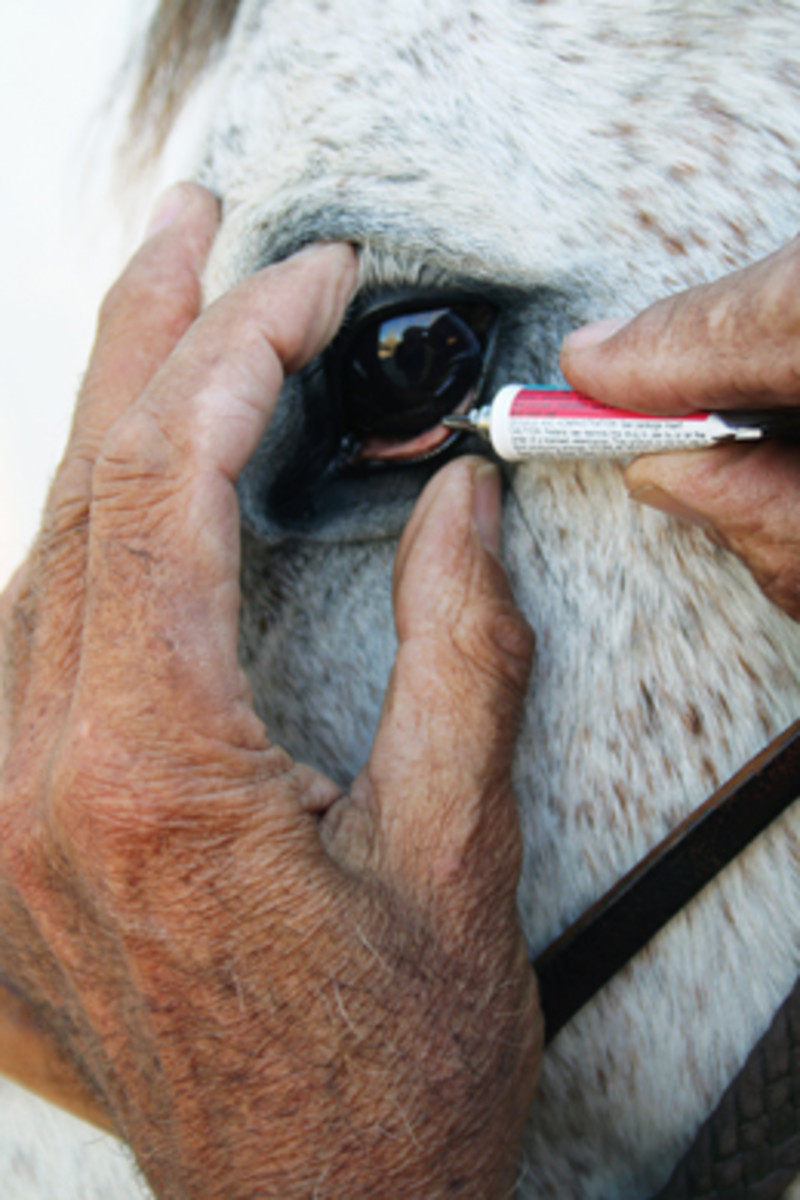
It is not my intent to try to tell horse owners how to diagnose and treat equine eye disorders or diseases. The equine eye is much too complex and sensitive an organ to be treated casually. I, for one, will refer the more threatening or exotic equine eye disorders and diseases that may require an ophthalmologist for consultation sooner than later. Every new eye disorder in a horse should be treated as a relative emergency.
The most common early symptom of an eye disorder is a horse holding an eye closed. There will be a spasm of the eyelids (blepharospasm), indicating discomfort in the eye or the lining (conjunctiva) surrounding the globe of the eye. There may be an ocular discharge in the form of tears, mucous or pus.
At this point, you may try and open the lids to get a look at the eye. One of the common problems causing this type of symptom is a foreign body such as an oat hull or foxtail. If it’s possible to remove it easily, do it. However, in my experience, the horse may have to be sedated in order to do this procedure safely. Another possibility is a foreign body that isn’t so obvious, and will require a more rigorous exam to find. Either way, you should have the eye examined to evaluate what damage may have occurred to the globe of the eye.
The type of injury to the eye will dictate what treatment is indicated. Ulceration or abrasion of the cornea is usually treated with topical antibiotic ointment or drops. Oftentimes, your veterinarian will also treat the eye with a drug, usually atropine, to dilate the pupil. This procedure is done to relieve the spasm of the internal muscles of the eye due to inflammation. The object of dilating the pupil, or iris, is to relieve painful spasm and prevent adhesions of the iris to the lens.
If there is no ulcer or abrasion of the cornea, an ointment with an antibiotic and a cortisone-type drug to relieve inflammation is sometimes prescribed. When the eye is treated to dilate the pupil, the horse should be kept stalled or a fly mask kept on to prevent exposure to bright light on the dilated eye.
The difference in types of medication prescribed for the specific ailment to an eye is critical, and problems can arise when using an improper ophthalmic product. I have seen situations where someone had a tube of ophthalmic ointment left over from a previous problem and just used it when a new problem occurred. Bad idea. The one ophthalmic ointment that will do no harm and may be helpful for a first-aid kit is one with just antibiotics.
Another factor I would mention that seems beneficial for certain horses is the fly mask. Older horses with laxity of the eyelids or horses with unpigmented eyelids benefit from having a fly mask in place, especially during the summer months.










